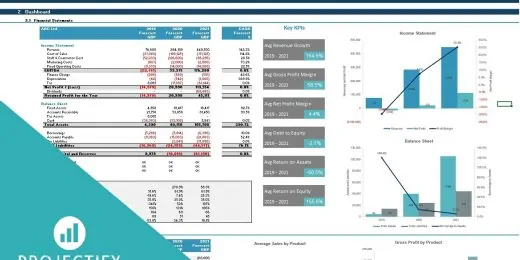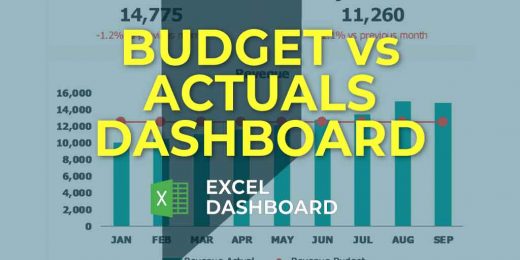How to Streamline Your Processes With Drone Photography Business Model

Streamline your drone photography business processes by implementing automation and standardization strategies. Utilize technology for efficient scheduling, image processing, and client delivery.
Drone photography offers a unique perspective that captivates audiences and provides valuable data across various industries. From real estate marketing to agriculture and infrastructure inspections, the demand for aerial imaging is booming. To capitalize on this trend, businesses must optimize their operations.
Streamlining your drone photography business means embracing digital tools for task management and customer relationship management (CRM). This involves utilizing software for flight planning, automated photo editing, and rapid content delivery to clients. By establishing a clear workflow and leveraging technology, you can reduce turnaround times, increase client satisfaction, and scale your business effectively. Efficiency is paramount; thus, focusing on time-saving practices and quality output is integral to a successful drone photography model.
The Rise Of Drone Photography In Business
Drone photography transforms business landscapes. This emerging technology brings a new perspective. It makes once costly aerial imagery affordable. Companies across sectors embrace this innovation. Let’s explore how drone photography integrates into business models.
Commercial Potential Of Drone Photography
Businesses reap financial rewards with drones. With unparalleled angles, marketing becomes more dynamic. Real estate listings stand out. Construction projects show progress. Crop monitoring becomes efficient in agriculture. These are just a few examples. The potential is immense.
- Marketing: Captivating aerial visuals enhance engagement.
- Real Estate: Properties shine with unique vantage points.
- Construction: Timelapse videos capture project evolution.
- Agriculture: Farmers gain insights from above.
Industry Applications Of Drone Imagery
Drones cater to diverse industries. The value they provide is clear. Each drone flight gathers key data. That data helps make informed decisions.
| Industry | Use Case |
|---|---|
| Media | Breaking news coverage from the sky |
| Insurance | Claims assessments with aerial photos |
| Telecom | Tower inspections for maintenance |
| Energy | Pipeline monitoring for safety |
Different sectors find unique uses for drone tech. Media companies provide real-time coverage. Insurers assess damages effortlessly. Telecom giants streamline tower checks. Energy firms monitor vast pipelines with ease.
Laying The Foundation For A Drone Photography Business
Embarking on a drone photography business journey requires a solid foundation. It’s essential to lay the groundwork meticulously. This will ensure the venture stands strong amidst challenges. Key elements include a cogent business plan and adherence to aviation rules. Now, let’s explore what it takes to create this robust base.
Business Plan Essentials
Crafting a business plan is like drawing a map for success. It charts the course for the entire operation. The following list includes core components of a drone photography business plan:
- Executive Summary: Capture your business vision in a concise manner.
- Market Analysis: Understand the demand, competition, and opportunities.
- Services Offered: List your photography services with clarity.
- Marketing Strategy: Detail how to attract and retain clients.
- Financial Projections: Project revenues, expenses, and profitability.
- Operational Plan: Outline day-to-day business workings.
A well-structured plan acts as a backbone for the business. It guides growth and secures funding when necessary.
Compliance With Aviation Regulations
Operating drones means navigating a complex legal sky. Strict rules govern drone use. Here’s a snapshot of critical compliance points:
| Requirement | Details |
|---|---|
| Pilot Certification | Achieve certification for commercial drone operations. |
| Drone Registration | Register drones used for business with authorities. |
| Airspace Restrictions | Adhere to no-fly zones and obtain necessary airspace authorizations. |
| Insurance | Secure insurance to protect your business and clients. |
Compliance is non-negotiable. It safeguards the business and its clients. Understanding these regulations is paramount.
Essential Drone Photography Equipment
Ready to soar to new heights in your drone photography business? Great! Let’s equip you with the essential gear. Your choice in equipment can make or break the quality and efficiency of your aerial imagery. Whether you’re snapping breathtaking landscapes or conducting real estate surveys, the right tools are crucial. In this section, we dive into the ‘Essential Drone Photography Equipment’ you’ll need.
Choosing The Right Drone
Your drone is the heart of the operation. Seek out models known for their stability, long battery life, and excellent camera support. Top contenders should also have ample flight time and a reliable GPS for smooth navigation. Below is a table of features to consider:
| Feature | Importance |
|---|---|
| Battery Life | Longer flights, more footage |
| Camera Compatibility | Ensures high-quality images |
| GPS Stability | Smooth and predictable flight paths |
| Weight Capacity | Ability to carry essential accessories |
Select a drone that aligns with your business needs. Start with entry-level models if you’re new to the field. For veterans, advanced drones with powerful specs are suitable.
Camera And Accessory Must-haves
Quality images hinge on your camera setup. Go for cameras specifically designed for drone use. They should offer high-resolution capabilities and robust image stabilization. Secure essential accessories too, like extra batteries, memory cards, and ND filters. Here’s a list of must-have items:
- Extra Batteries: Keep your drone in the air longer.
- Memory Cards: Ample storage for all your photos and videos.
- Lens Filters: Control light and glare for perfect shots.
- Carrying case: Protects your gear during transit.
- Propeller Guards: A shield against accidental damage.
Invest in a quality gimbal too. It stabilizes your camera even during turbulent flights. Ensure you have multiple backup propellers and a robust maintenance routine. Quick readiness and secure equipment handling translate into stunning, consistent aerial footage.
Mastering Drone Operation And Photography Techniques
Starting a drone photography business requires more than just a camera in the sky. Mastering the art of drone operations and photography is essential for delivering top-notch services to your clients. Let’s dive into the details of becoming a drone photography pro.
Pilot Training And Certification
Pilot training is the first step on your journey. Before you take flight, you need to understand the rules. Getting certified ensures safe and legal operations. In many places, this means passing an exam to get a Remote Pilot Certificate.
- Study for the exam – Get materials and start studying.
- Understand regulations – Learn about airspace, weather, and safety.
- Pass the test – Schedule and clear your certification exam.
- Stay updated – Keep up with the latest drone laws and best practices.
Capturing High-quality Images And Videos
To capture stunning visuals, learn the craft of drone photography. It’s all about the right angles, lighting, and movements.
| Aspect | Technique |
|---|---|
| Angles | Find unique perspectives |
| Lighting | Shoot during golden hours |
| Movements | Use smooth and steady flights |
Quality equipment matters for top-notch results. Ensure your drone comes with a high-resolution camera. Learn about editing software to enhance your photos and videos post-flight.
- Choose the right drone – Check for camera quality and stability.
- Perfect your skills – Practice manual controls for precise shots.
- Edit like a pro – Use editing tools to refine your visuals.
Developing A Robust Portfolio And Online Presence
Drone photography businesses thrive on a strong portfolio and online presence. An engaging portfolio attracts clients. A visible, optimized online presence draws traffic. Combine both for business success. Here’s how:
Showcase Of Best Work
Your portfolio is the heart of your work. Collect your best photos and videos. Choose variety to show skill range. Use high-quality displays. Make sure to:
- Highlight signature projects.
- Showcase different styles and settings.
- Update often with fresh content.
Use a clean, easy-to-navigate portfolio layout. This lets visitors find and enjoy your work.
Leveraging Social Media And SEO
To stand out, use social media smartly. Post engaging content. Interact with followers. Use platforms like:
- Instagram for visuals.
- Facebook for community building.
- LinkedIn for professional networking.
For SEO, focus on:
- Researching relevant keywords.
- Optimizing your website’s content.
- Including metadata for images.
Monitor SEO performance using tools. Adjust strategies as needed. An online presence with strong SEO and social media makes your drone photography business easy to find and follow.
Strategies For Attracting And Retaining Clients
To excel in drone photography, gaining clients isn’t enough. Keep them coming back for more. This section delves into effective strategies for not only drawing in new clients but also making sure they stay with you for the long haul.
Effective Marketing Approaches
Begin with a solid marketing plan that highlights the uniqueness of your drone photography business. Use breathtaking aerial shots in your materials to showcase your capabilities. Here are tactics to consider:
- Develop a user-friendly website with a portfolio that’s easy to navigate.
- Use social media platforms to share eye-catching content and engage with potential clients.
- Offer promotions for first-time customers to encourage trial.
- Create an email newsletter with updates, tips, and special offers.
Creating Long-term Business Relationships
Once you’ve attracted clients, focus on building a lasting connection. A satisfied client not only provides repeat business but also refers others. To establish this bond:
- Deliver exceptional customer service at every interaction.
- Request feedback and show that your business values client input.
- Stay in touch through regular updates or check-ins to maintain relevance.
Remember, personal touches make a difference. Personalize communications and offer solutions tailored to your clients’ needs. Your customer-centered approach is a powerful tool—not just in seeing first-time growth, but ensuring clients remain loyal over time.
Streamlining Operations With Technology
In a drone photography business, leveraging technology streamlines operations, making tasks quicker and more accurate. This section unveils the key tech tools that help you run your drone photography business like a well-oiled machine.
Software For Efficient Workflow
Choosing the right software can transform your business.
- Flight planning tools customize your aerial routes.
- Image processing software refines your photos automatically.
- Client management systems keep track of projects and payments.
These solutions save time and boost your business efficiency.
Automating Repetitive Tasks
Automation is your friend.
- Use scheduling tools to book flights without manual input.
- Automate photo uploads to save hours after a flight.
- Set up automatic invoicing to ensure timely payments.
These strategies eliminate routine tasks, freeing you to focus on growing your business.
Navigating The Challenges Of The Drone Photography Market
Navigating the Challenges of the Drone Photography Market is a task every burgeoning enterprise must face. The drone photography business model promises agility and innovation; yet, it also demands a keen eye for the evolving landscape. Entrepreneurs need strategies to overcome common hurdles in a domain where technological progress and market dynamics shift rapidly.
Dealing With Competitive Pressure
As the sky buzzes with more drones, standing out becomes crucial. Thriving in a saturated market requires a blend of competitive pricing, exceptional service quality, and niche targeting. Below are key tactics for managing competitive pressure effectively:
- Identify Unique Selling Propositions (USPs): Determine what sets your services apart and spotlight these features in marketing campaigns.
- Focus on Customer Experience: Delight clients with seamless booking, execution, and delivery processes to foster loyalty and referrals.
- Implement Efficient Workflow Systems: Use software to streamline operations, cut costs, and enhance productivity.
Adapting To Industry Changes And Trends
The fast-paced evolution of drone technology and client expectations calls for constant adaptation. A forward-looking approach is pivotal for long-term success. Adaptation can include:
- Regularly updating equipment to incorporate the latest in drone capabilities and camera technology.
- Monitoring industry trends to predict and capitalize on emerging market opportunities.
- Offering diverse services, such as thermal imaging or 3D mapping, to cater to a broad client base.
Staying ahead requires staying informed and remaining flexible to pivot your business approach as the market evolves.
Expanding Services And Scaling Your Business
Drone photography businesses can reach new heights by broadening their offerings and strategically growing operations. Success hinges on innovative services and a talented team ready to take on fresh challenges. Explore how to widen your horizons and boost your business potential with these key expansions.
Diversifying Into New Markets
Drones are not just for stunning aerial shots anymore. New market opportunities abound, from agricultural mapping to industrial inspections. Here’s a glance at some lucrative avenues to explore:
- Real Estate: Showcase property layouts and offer virtual tours.
- Construction: Provide progress snapshots and 3D mapping.
- Agriculture: Deliver crop analyses and field surveillance.
- Public Safety: Assist in search and rescue missions.
Hiring And Training Additional Pilots
The right team can make or break your expansion. Focus on hiring talented individuals with a passion for drone technology and photography. Ensuring they are adept at flying and capturing images is just the start. Here’s what to emphasize during the hiring process:
| Aspect | Details |
|---|---|
| Certification | All pilots must have Federal Aviation Administration (FAA) certification. |
| Skills | Look for skills like spatial awareness, precision control, and photo editing. |
| Training | Implement ongoing training on new technologies, safety protocols, and customer service. |
As your business grows, revisit your training programs to include advanced techniques and specialized skills that align with your expanding services.
Future Outlook And Innovations In Drone Photography
Drone photography is revolutionizing the way we capture images and manage businesses. With technological advancements, this field is set to soar even higher. This section explores the potential changes on the horizon.
Emerging Technologies To Watch
Emerging technologies in drone photography promise to redefine traditional models. Key developments include:
- AI Integration: Smart drones use artificial intelligence to improve image capture accuracy and efficiency.
- Enhanced Battery Life: Drones fly longer, capturing more footage without frequent recharging.
- Autonomous Flight: Self-flying drones remove the need for manual control, making complex shots easier.
- Obstacle Avoidance Systems: Safer flights with less risk of crashes or interference.
Preparing For The Evolution Of Drone Services
It is vital to stay ahead in the competitive drone photography business. Steps to prepare include:
- Embrace educational opportunities to understand new technologies.
- Invest in upgrades to keep hardware and software cutting-edge.
- Follow legal changes that accompany new drone capabilities.
- Connect with industry experts to stay informed about trends.
Drones are not just flying cameras, but data-gathering tools with vast potential. They are transforming industries, from real estate to agriculture.
Frequently Asked Questions
What Is A Drone Photography Business Model?
A drone photography business model is a plan outlining how to create, deliver, and capture value using unmanned aerial vehicles (UAVs) for taking photographs. It usually includes strategies for marketing, operations, and financial planning.
How Can Drones Streamline Photography Processes?
Drones can streamline photography processes by providing quick aerial perspectives, reducing the need for complex setups. They allow photographers to capture high-quality images and videos from angles that would otherwise be difficult or impossible to reach.
What Are The Benefits Of Using Drones In Business?
Using drones in business offers rapid data collection, cost-effective aerial surveys, high-resolution imaging for marketing, and unique customer perspectives. Drones can increase efficiency and provide a competitive edge through innovative services.
How To Start A Drone Photography Business?
Starting a drone photography business requires understanding FAA regulations, acquiring a quality drone, honing your flying and photography skills, and developing a solid business and marketing plan. It’s essential to ensure legal compliance and insurance coverage.
Conclusion
Embracing drone photography revolutionizes your operational workflow, yielding remarkable benefits. It boosts efficiency, slashes costs, and delivers unparalleled perspectives. Tailor drone tech to fit your needs, and watch your photography business soar. Step into the future; let drones elevate your process to new heights.
Ready to take flight?



















































